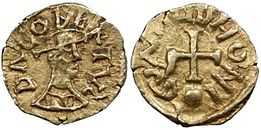676
| Millennium: | 1st millennium |
|---|---|
| Centuries: | 6th century – 7th century – 8th century |
| Decades: | 640s 650s 660s – 670s – 680s 690s 700s |
| Years: | 673 674 675 – 676 – 677 678 679 |
| 676 by topic | |
| Politics | |
| State leaders – Sovereign states | |
| Birth and death categories | |
| Births – Deaths | |
| Establishment and disestablishment categories | |
| Establishments – Disestablishments | |
| Gregorian calendar | 676 DCLXXVI |
| Ab urbe condita | 1429 |
| Armenian calendar | 125 ԹՎ ՃԻԵ |
| Assyrian calendar | 5426 |
| Bengali calendar | 83 |
| Berber calendar | 1626 |
| Buddhist calendar | 1220 |
| Burmese calendar | 38 |
| Byzantine calendar | 6184–6185 |
| Chinese calendar | 乙亥年 (Wood Pig) 3372 or 3312 — to — 丙子年 (Fire Rat) 3373 or 3313 |
| Coptic calendar | 392–393 |
| Discordian calendar | 1842 |
| Ethiopian calendar | 668–669 |
| Hebrew calendar | 4436–4437 |
| Hindu calendars | |
| - Vikram Samvat | 732–733 |
| - Shaka Samvat | 598–599 |
| - Kali Yuga | 3777–3778 |
| Holocene calendar | 10676 |
| Iranian calendar | 54–55 |
| Islamic calendar | 56–57 |
| Japanese calendar | N/A |
| Julian calendar | 676 DCLXXVI |
| Korean calendar | 3009 |
| Minguo calendar | 1236 before ROC 民前1236年 |
| Seleucid era | 987/988 AG |
| Thai solar calendar | 1218–1219 |
| Wikimedia Commons has media related to 676. |

King Dagobert II of Austrasia (c. 650–679)
Year 676 (DCLXXVI) was a leap year starting on Tuesday (link will display the full calendar) of the Julian calendar. The denomination 676 for this year has been used since the early medieval period, when the Anno Domini calendar era became the prevalent method in Europe for naming years.
Events
By place
Byzantine Empire
- Summer – Siege of Constantinople: Caliph Muawiyah I sends his son Yazid with Muslim reinforcements to Constantinople. At the same time, the Byzantines have to face a Slavic attack on Thessaloniki (modern Macedonia) and Lombard attacks in Italy.[1]
Europe
- Dagobert II, son of the late king Sigibert III, becomes partly with help of bishop Wilfrid the new ruler of Austrasia after his predecessor Clovis III is murdered.
Britain
- King Æthelred of Mercia invades Kent in an attempt to enforce overlordship and diminish Kentish influence in Surrey and London. His armies destroy the Diocese of Rochester [2] (seat of the bishops in West Kent) and ravage the surrounding countryside.
- King Æscwine of Wessex dies after a 2-year reign and is succeeded by Centwine, son of the late king Cynegils. He reasserts the power of his Anglo-Saxon kingdom over the Welsh.
Asia
- Emperor Tenmu of Japan promulgate a decree in about taxes from fiefs and the employment of persons for the service from the outer provinces. Men of distinguished ability are allowed to enter the service, even though they are of the common people, regardless of their ranks.
By topic
Religion
- Aldhelm, Anglo-Saxon scholar-poet, founds Malmesbury Abbey on the site of the hermitage of his old tutor Máel Dub.
- Æthelred of Mercia founds the monastery at Breedon on the Hill on the site of The Bulwarks, an Iron Age hill fort.
- June 17 – Pope Adeodatus II dies at Rome after a reign of 4 years. He is succeeded by Donus as the 78th pope.
- Cuthbert of Lindisfarne retires to a hermitage near Holburn, at a place now known as St. Cuthbert's Cave.
Births
- John of Damascus, Syrian monk and priest (approximate date)
- Muhammad al-Baqir, imām and descendant of Muhammad (d. 733)
- January 28 – Toneri, Japanese prince (d. 735)
Deaths
- Æscwine, king of Wessex
- Clovis III, king of Austrasia
- June 17 – Pope Adeodatus II
- Le Yanwei, chancellor of the Tang Dynasty
- Mangsong Mangtsen, emperor of Tibet
- Wang Bo, Chinese poet